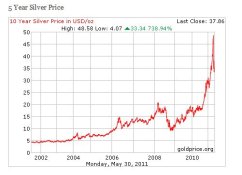I'm glad that I'm in the US and can finally afford photography. If these prices, even adjusted for inflation, had been the case in my high school and college days when I was really getting into photography, or in the late 90s when I became interested again and got into large format, I couldn't have afforded it, or at least could have done a lot less of it. (At least, with Ilford paper - the east European stuff and even re-branded Arista Harman doesn't seem too bad to me now when I run it backwards through an inflation calculator - about what I was paying back then actually.) Now I have more money and far less time, with the result that I can afford to do all the photography I have time for, which isn't enough.
I am of somewhat mixed mind about this. On the one hand I understand, partly from past personal experience even though the materials were much cheaper then, how this sort of pricing can and will impact students and young adults who will be the ones that really need to become enthusiastic users if we're to keep traditional photography alive. On the other hand, "expensive hobby" is a pretty relative term. After learning to fly (see avatar...) photography and pretty much all my other hobbies still seem downright cheap. But then on the third hand, there's the time limitations that go with having a career, girlfriend, being a homeowner now etc. I literally don't have time to use enough materials for price to be a problem. Someone above saying if they used Ilford they'd be spending more on materials than on all their other bills was a bit shocking (unless that poster is a professional, maybe.) There's no way I could do that. In fact I don't think I could use that many materials if I just had my paycheck handed to me without having to put in my 40+ per week to earn it, what with all my other interests and obligations. I have other hobbies, for one thing.

Prices elsewhere, well - UK prices are a bit insane by US standards and other places are beyond that. At the prices quoted for the Netherlands I might just go rent airplanes (or buy a share of one) and fly more instead!
Another point - someone compared the price of darkroom paper and chemicals to ink and inkjet paper, but that's not fair if doing a direct comparison. Once a digital process is calibrated you needn't make a print until the image is the way you want it on the monitor. Even if you decide to tweak a bit more, two sheets would be about the most you'd use (or at least that I have when I've dabbled with such.) In the darkroom I will always go through several, sometimes as many as 10 or more, sheets of paper before I have a final print. There are some things you can do to save here. I usually make smaller work prints than the final print (use either the Kodak calculator wheel in the Darkroom Dataguide or a simple formula for such to convert to equivalent exposures when changing print size) for one, but it still takes more sheets per final print in my experience. I rather enjoy this process and seeing the image come along at different stages, but it does add to the cost.














